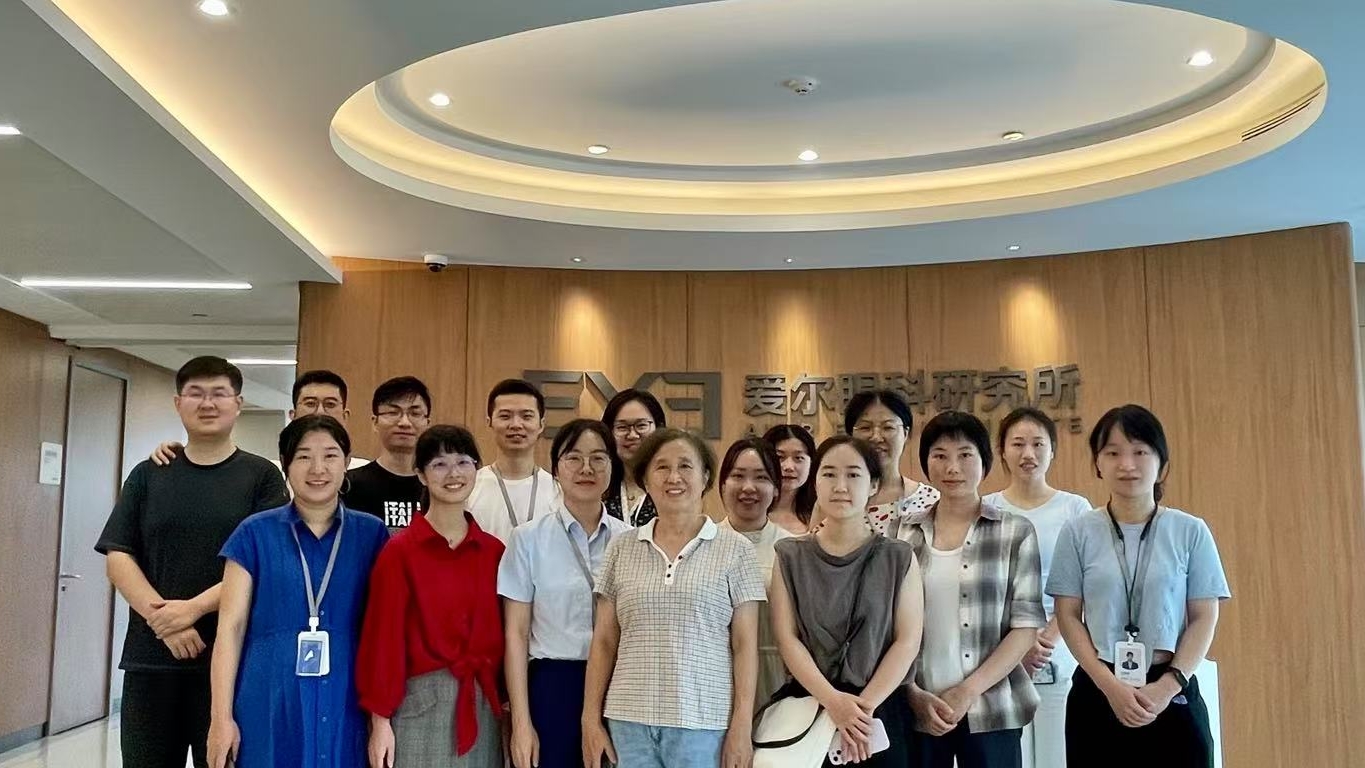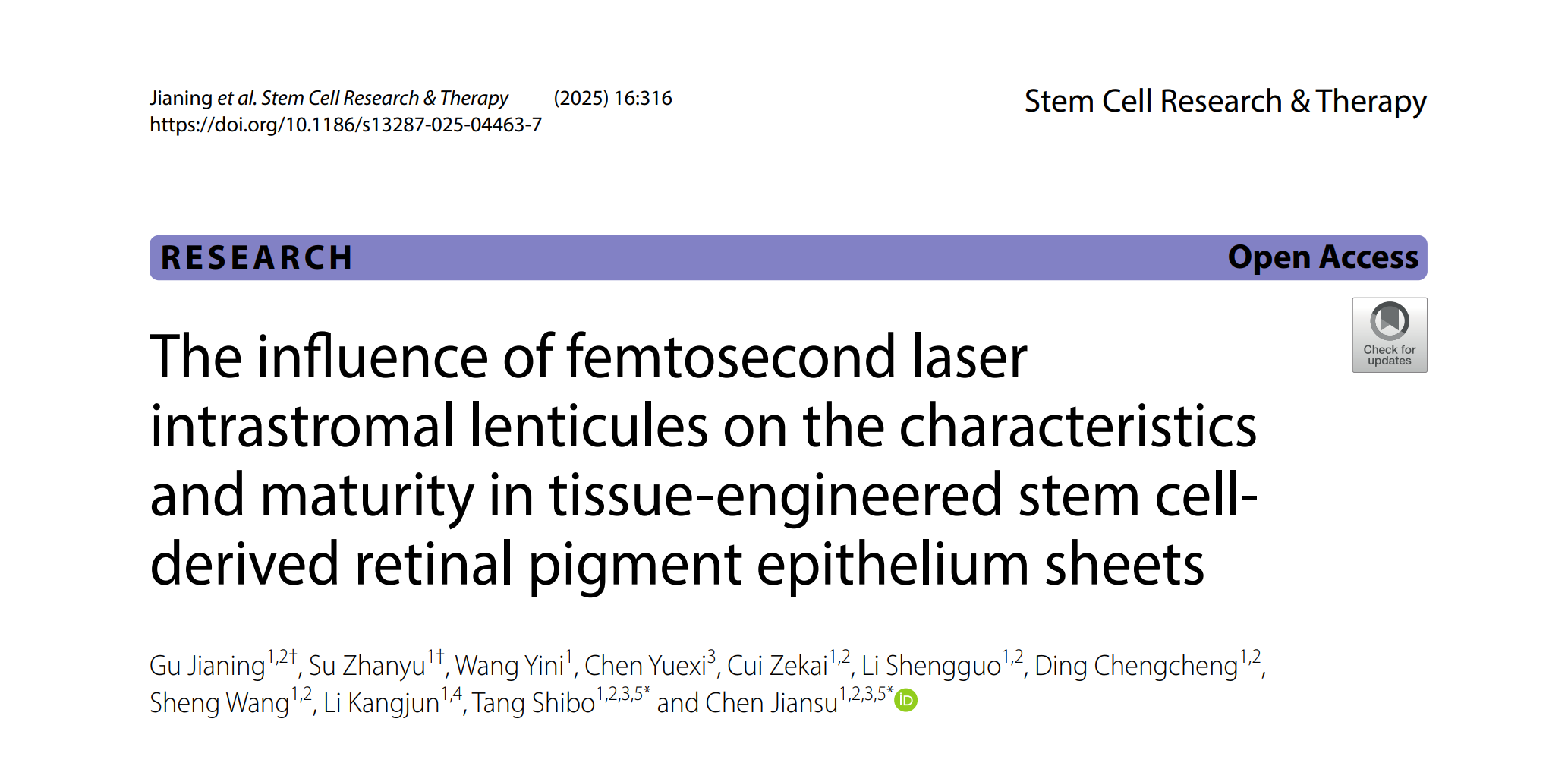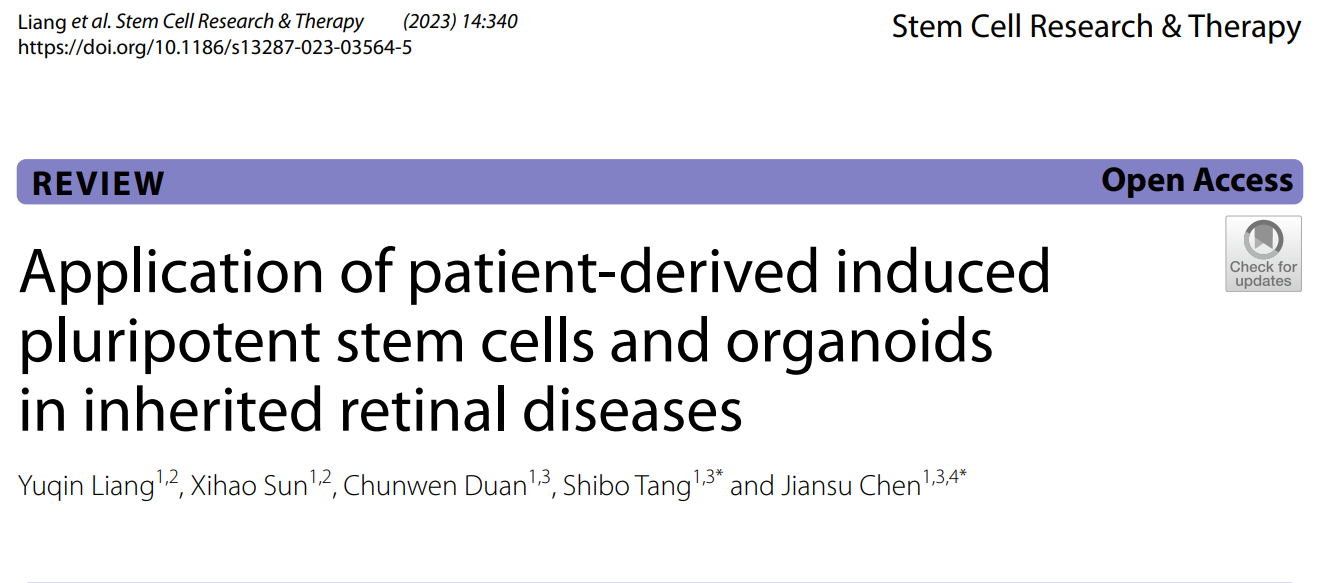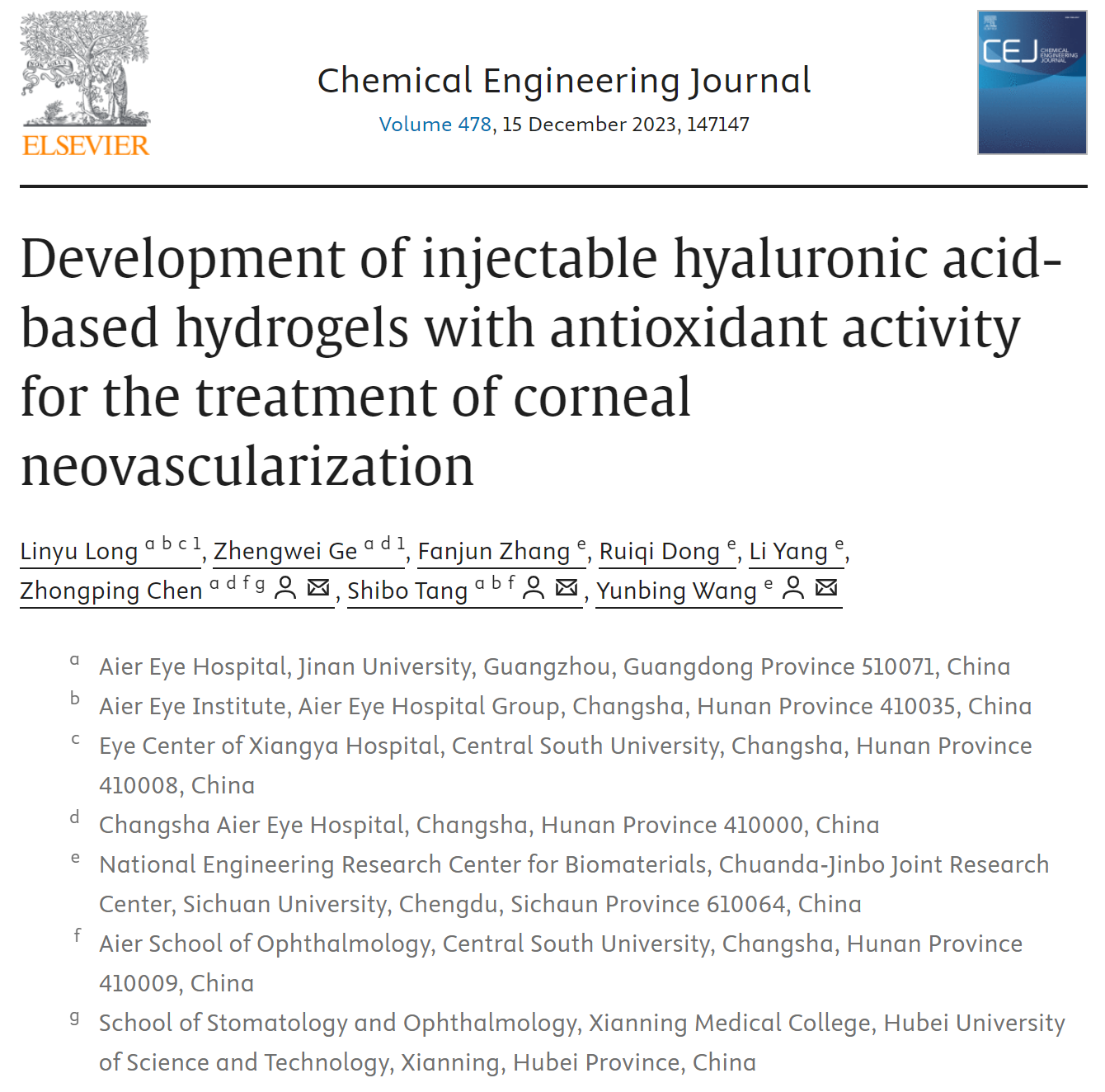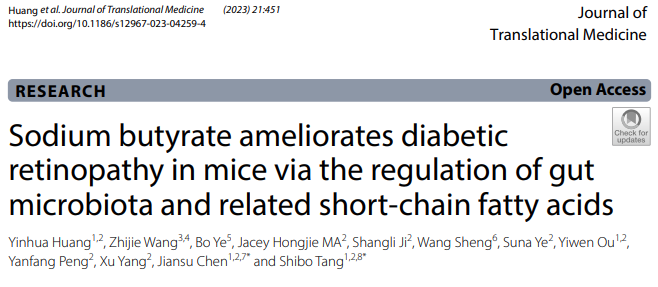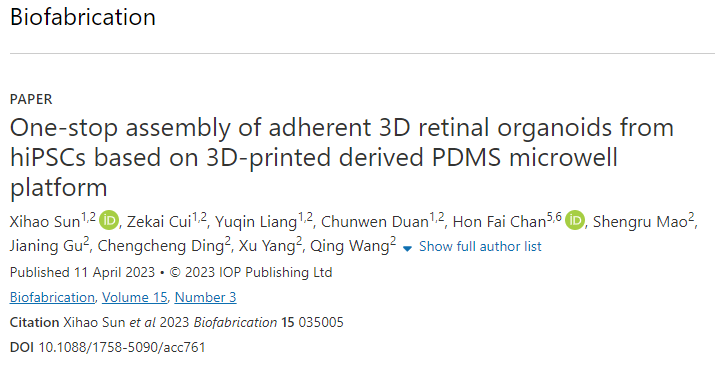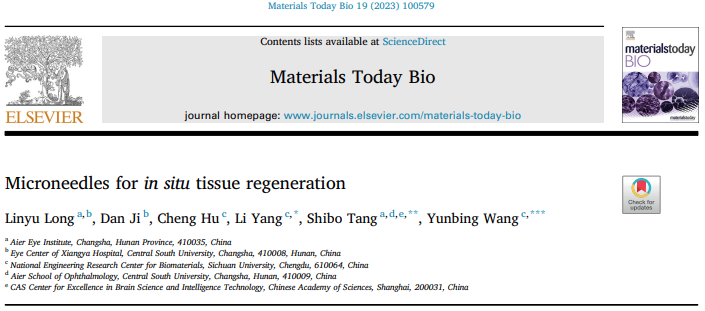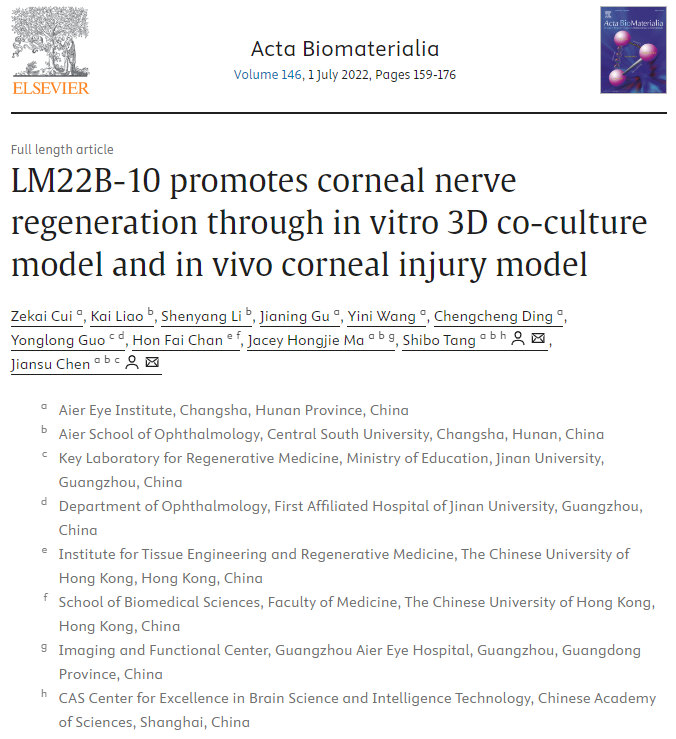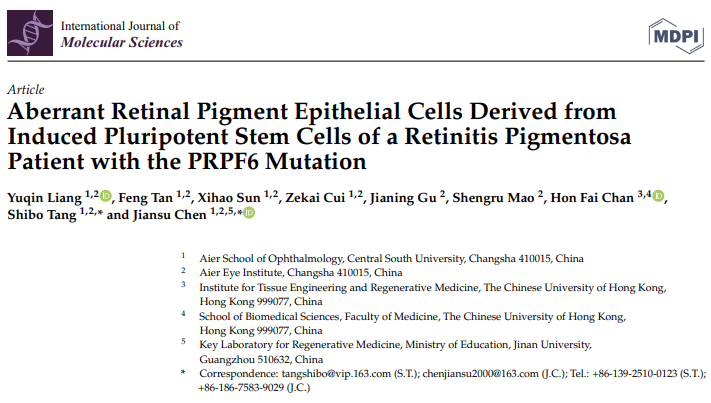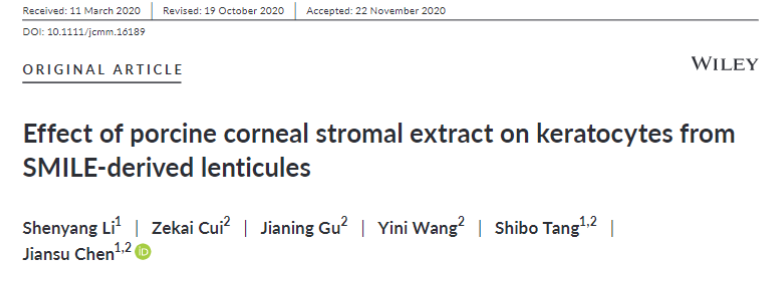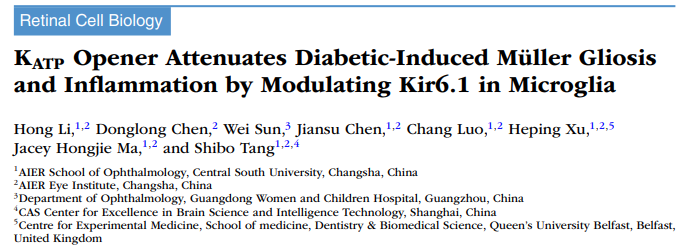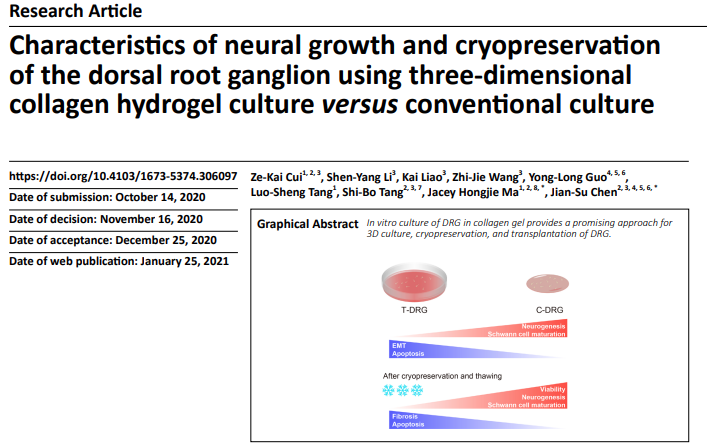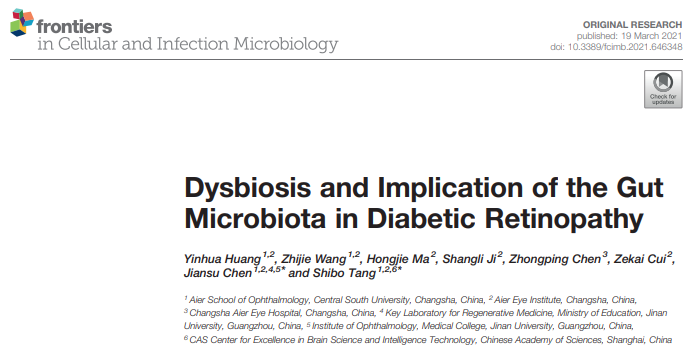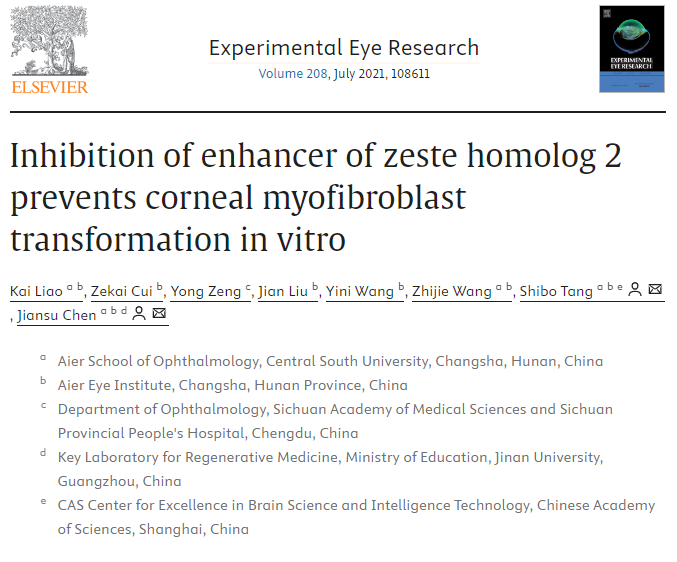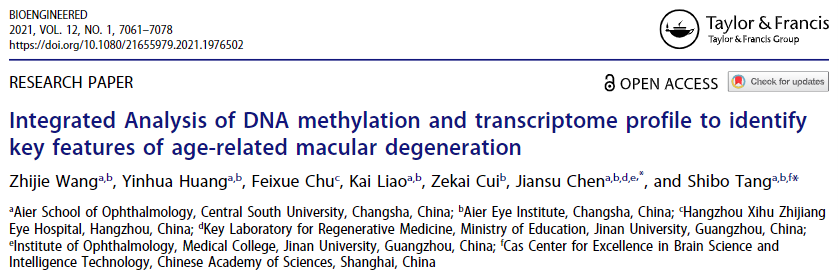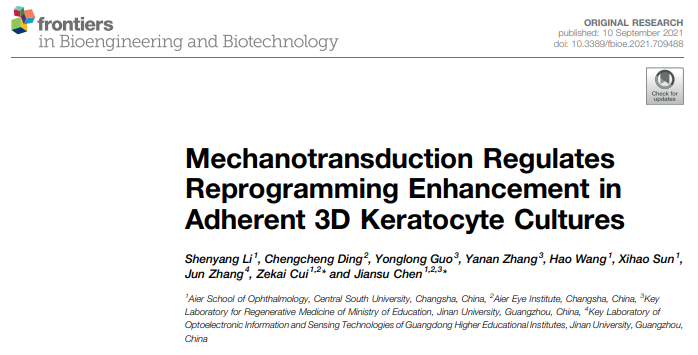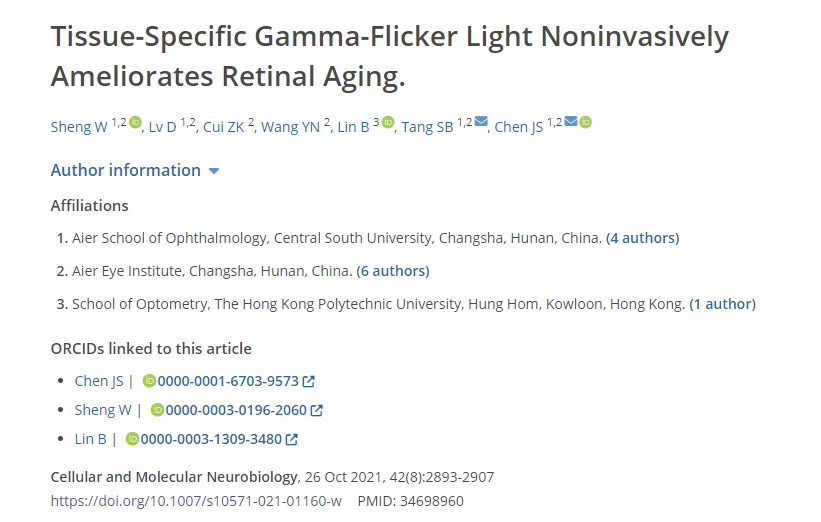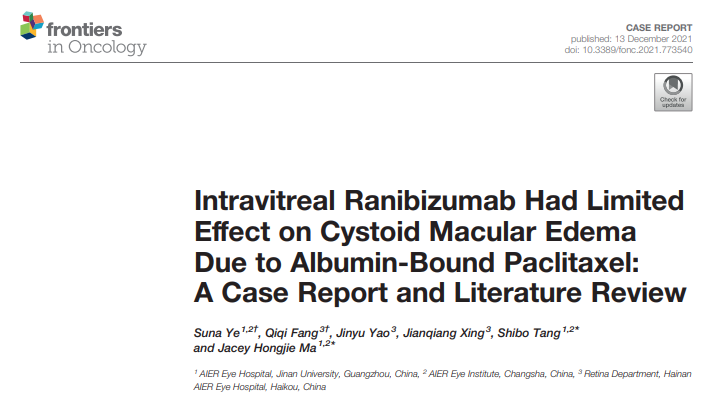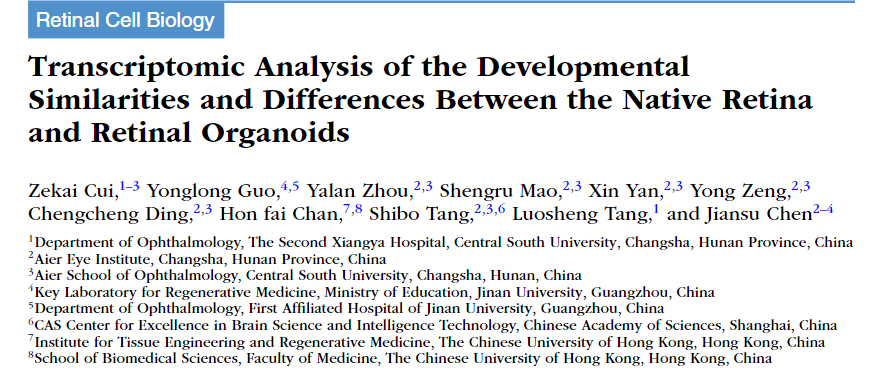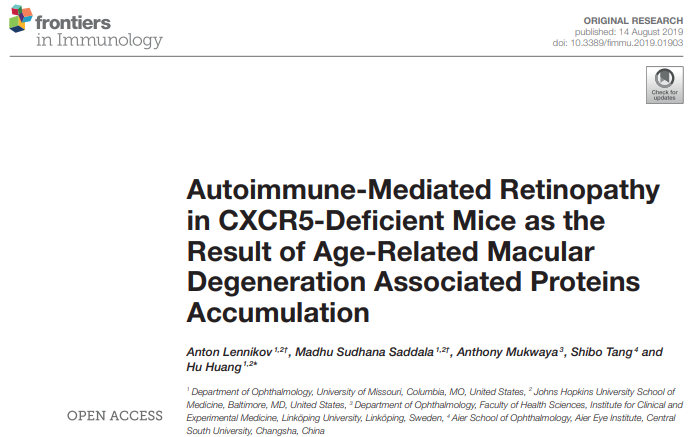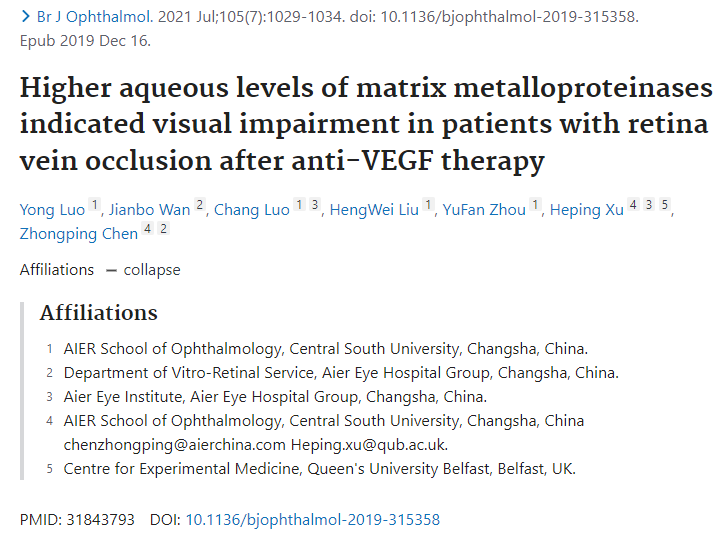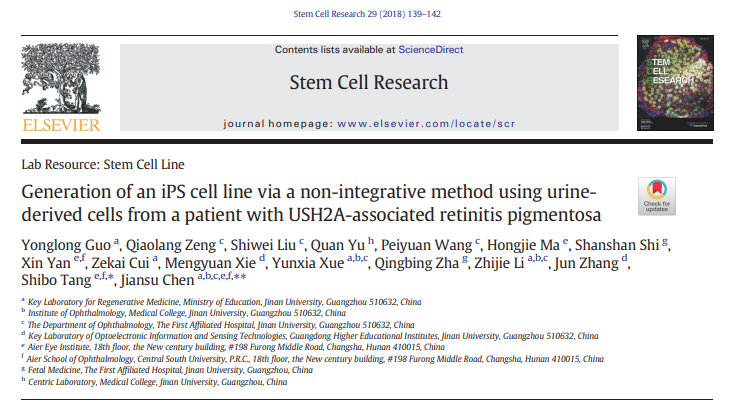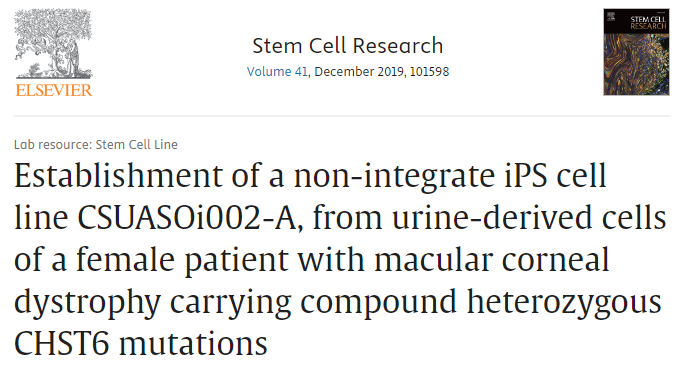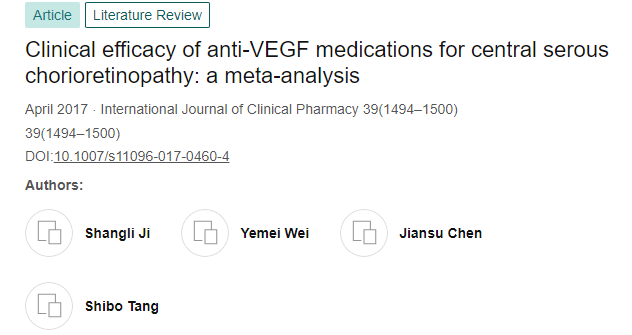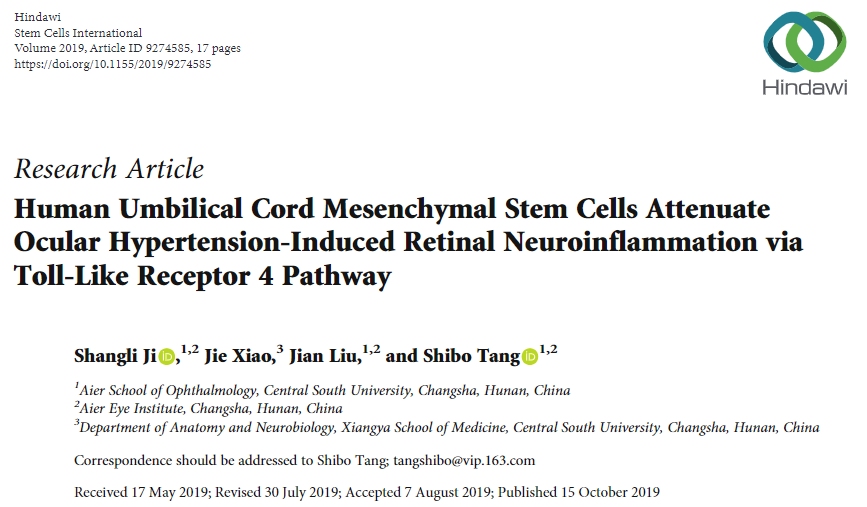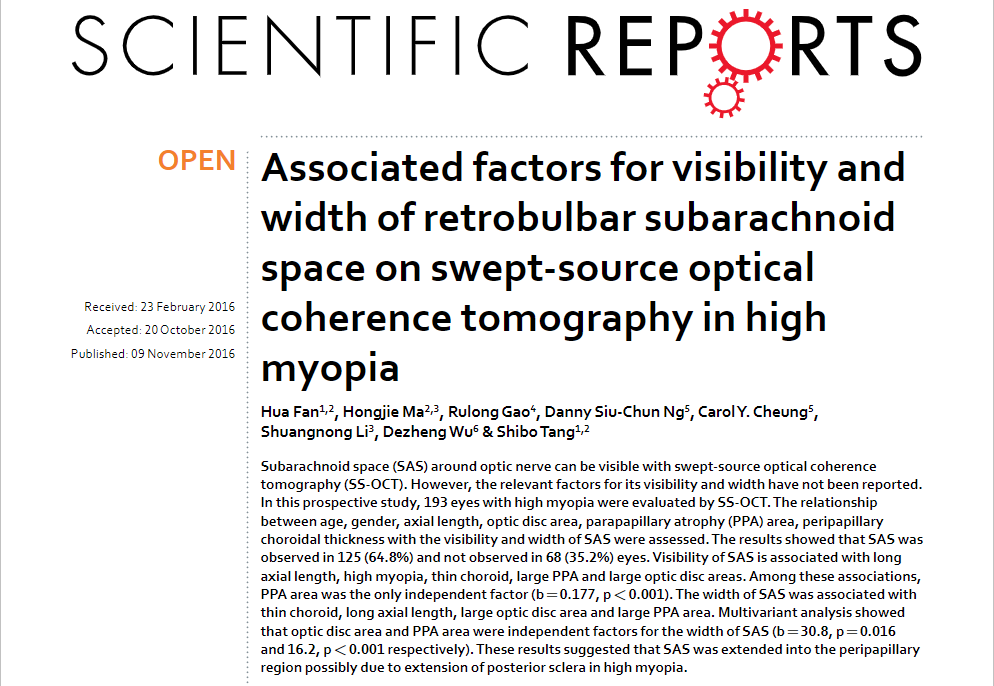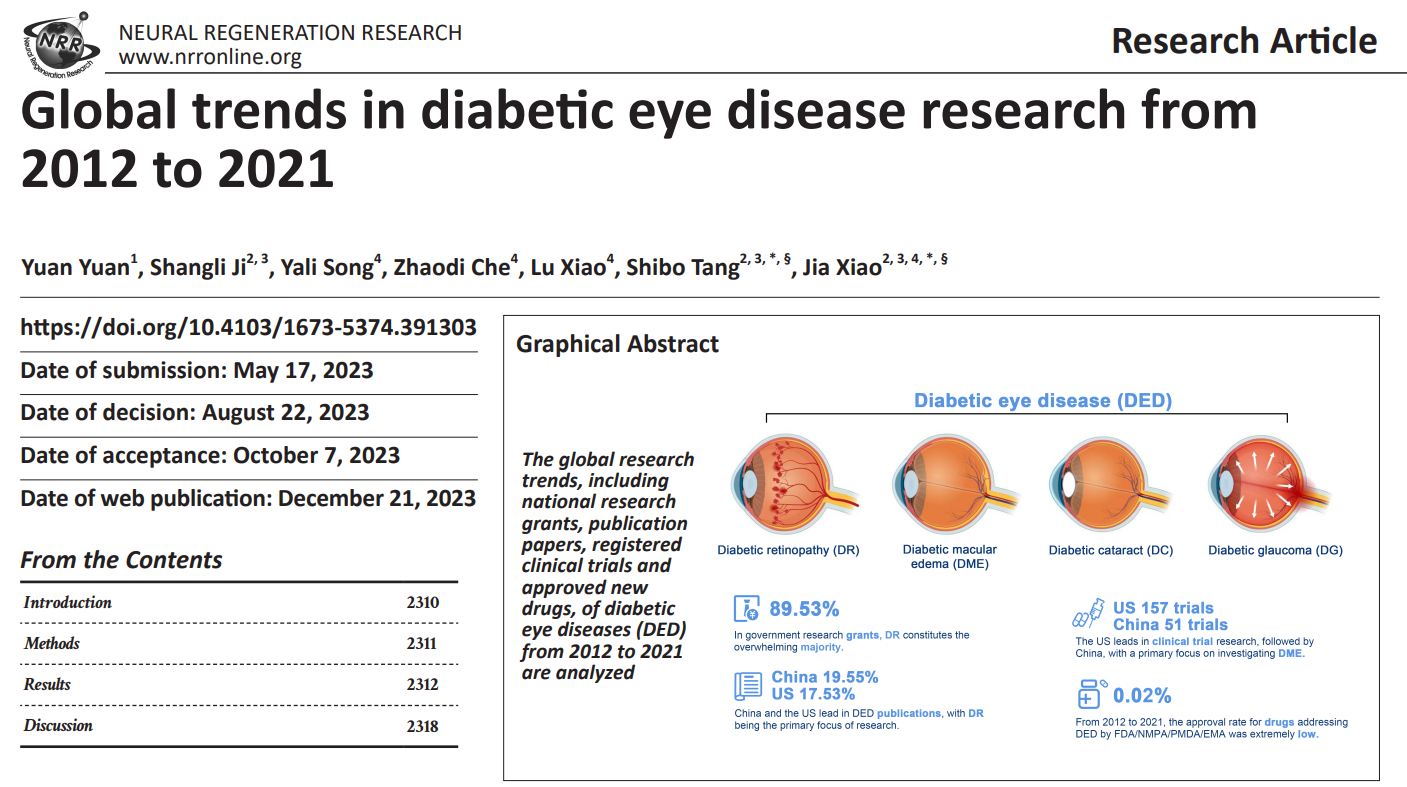- 首页
- 关于我们
概况介绍 研究方向 人才培养 委员会/committee
- 员工团队
特聘专家 主要领导 行政团队 技术团队 PI团队- 科研平台
中心实验室 实验动物中心 生物样本库- 最新资讯
- 首页
- 关于我们
概况介绍 研究方向 人才培养 委员会/committee
- 员工团队
特聘专家 主要领导 行政团队 技术团队 PI团队- 科研平台
中心实验室 实验动物中心 生物样本库- 最新资讯
Clock Gene Nr1d1 Alleviates Retinal Inflammation Through Repression of Hmga2 in Microglia发布日期: 2024-09-03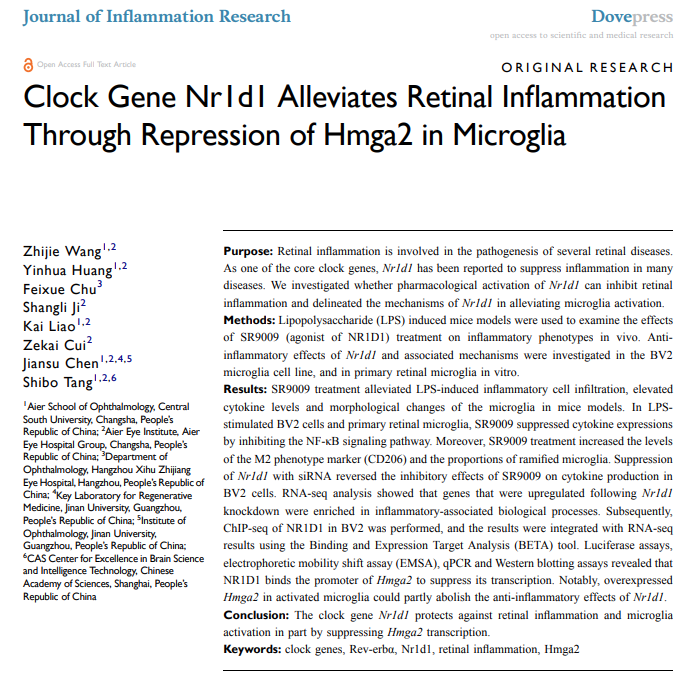
Abstract
Purpose: Retinal inflammation is involved in the pathogenesis of several retinal diseases. As one of the core clock genes, Nr1d1 has been reported to suppress inflammation in many diseases. We investigated whether pharmacological activation of Nr1d1 can inhibit retinal inflammation and delineated the mechanisms of Nr1d1 in alleviating microglia activation.
Methods: Lipopolysaccharide (LPS) induced mice models were used to examine the effects of SR9009 (agonist of NR1D1) treatment on inflammatory phenotypes in vivo. Anti-inflammatory effects of Nr1d1 and associated mechanisms were investigated in the BV2 microglia cell line, and in primary retinal microglia in vitro.
Results: SR9009 treatment alleviated LPS-induced inflammatory cell infiltration, elevated cytokine levels and morphological changes of the microglia in mice models. In LPS-stimulated BV2 cells and primary retinal microglia, SR9009 suppressed cytokine expressions by inhibiting the NF-κB signaling pathway. Moreover, SR9009 treatment increased the levels of the M2 phenotype marker (CD206) and the proportions of ramified microglia. Suppression of Nr1d1 with siRNA reversed the inhibitory effects of SR9009 on cytokine production in BV2 cells. RNA-seq analysis showed that genes that were upregulated following Nr1d1 knockdown were enriched in inflammatory-associated biological processes. Subsequently, ChIP-seq of NR1D1 in BV2 was performed, and the results were integrated with RNA-seq results using the Binding and Expression Target Analysis (BETA) tool. Luciferase assays, electrophoretic mobility shift assay (EMSA), qPCR and Western blotting assays revealed that NR1D1 binds the promoter of Hmga2 to suppress its transcription. Notably, overexpressed Hmga2 in activated microglia could partly abolish the anti-inflammatory effects of Nr1d1.
Conclusion: The clock gene Nr1d1 protects against retinal inflammation and microglia activation in part by suppressing Hmga2 transcription.
Keywords: Hmga2; Nr1d1; Rev-erbα; clock genes; retinal inflammation.
相关文章-
Generation of vascularized retinal organoids containing microglia based on a PDMS microwell platformAbstractRetinal organoids (ROs) offer a biomimetic in vitro model for inves...2025-10-24
-
近期,爱尔眼科长沙医学中心陈建苏教授、唐仕波教授、崔泽凯副教授团队在角膜损伤修复和视网膜疾病治疗方面研究取得了多项令人瞩目的成果,为了解致盲性角膜和视网膜疾病的...2025-08-04
-
近日,由中国医师协会眼科医师分会遗传眼病学组牵头制定的《X连锁视网膜劈裂症临床诊疗的中国专家共识(2025)》(以下简称《共识》)正式发布。X连锁视网膜劈裂症是...2025-07-07
-
AbstractBackground Recent advances in clinical trials have involved the transpla...2025-05-06
-
Inherited retinal diseases (IRDs) can induce severe sight-threatening retinal de...2024-09-11
-
Corneal neovascularization (CNV) is a condition that can severely adversely affe...2024-09-05
-
Diabetic retinopathy (DR) is a common complication of diabetes and has a high pr...2024-09-04
-
Diabetic retinopathy (DR) development is associated with disturbances in the gut...2024-09-04
-
The three-dimensional (3D) retinal organoids (ROs) derived from human induced pl...2024-09-04
-
Tissue injury is a common clinical problem, which may cause great burden on pati...2024-09-04
-
Corneal nerve wounding often causes abnormalities in the cornea and even blindne...2024-09-04
-
Pre-mRNA processing factors (PRPFs) are vital components of the spliceosome and ...2024-09-04
-
Propagating large amounts of human corneal stromal cells (hCSCs) in vitro while ...2024-09-04
-
This study aimed to determine the effect of pinacidil, a nonselective KATP chann...2024-09-04
-
In vertebrates, most somatosensory pathways begin with the activation of dorsal ...2024-09-04
-
The pathogenesis of type 2 diabetes mellitus (T2DM) is commonly associated with ...2024-09-04
-
Corneal fibroblast can be transformed into corneal myofibroblasts by TGF-β1.2024-09-04
-
Age-related macular degeneration (AMD) is a common vision-threatening disease. T...2024-09-04
-
Suspended spheroid culture using ultralow attachment plates (ULAPs) is reported ...2024-09-04
-
本申请涉及细胞和器官培养技术领域,公开了一种三维类器官灌流培养器具,包括:细胞培养室,细胞培养室用于盛放培养基;多个换液槽,设于细胞培养室,用于更换细胞培养室中...2024-09-04
-
Purpose: Retinal inflammation is involved in the pathogenesis of several retinal...2024-09-03
-
Aging is a risk factor for multiple retinal degeneration diseases. Entraining br...2024-09-03
-
Angiographically silent cystoid macular edema (CME) is a rare complication from ...2024-09-03
-
The neuroretina is protected by its own defense system, that is microglia and th...2024-09-03
-
Purpose: We performed a bioinformatic transcriptome analysis to determine the al...2024-09-03
-
Previous research has shown that CXCR5−/− mice develop retinal degeneration (RD)...2024-09-03
-
Purpose: To investigate the levels of matrix metalloproteinases (MMPs) in aqueou...2024-09-03
-
In vitro generation of a functional retinal pigment epithelium (RPE) monolayer s...2024-09-03
-
We have established an induced pluripotent stem (iPS) cell line using urine-deri...2024-09-03
-
Purpose: The purpose of this study is to investigate the potential therapeutic b...2024-09-03
-
We report the human induced pluripotent stem cell line (iPSC) CSUASOi002-A, gene...2024-09-03
-
Background Central serous chorioretinopathy (CSC) is a widespread retinal disord...2024-09-03
-
Glaucoma is characterized by progressive, irreversible damage to the retinal gan...2024-09-03
-
Subarachnoid space (SAS) around optic nerve can be visible with swept-source opt...2024-09-03
-
Diabetic eye disease refers to a group of eye complications that occur in diabet...2023-05-01
- 员工团队
- 员工团队



